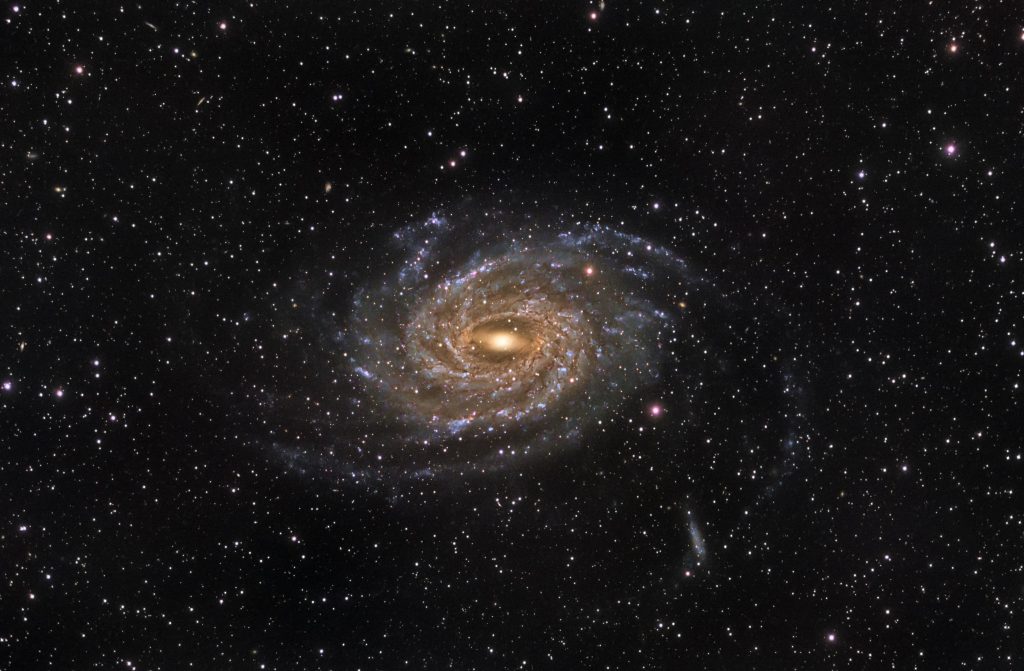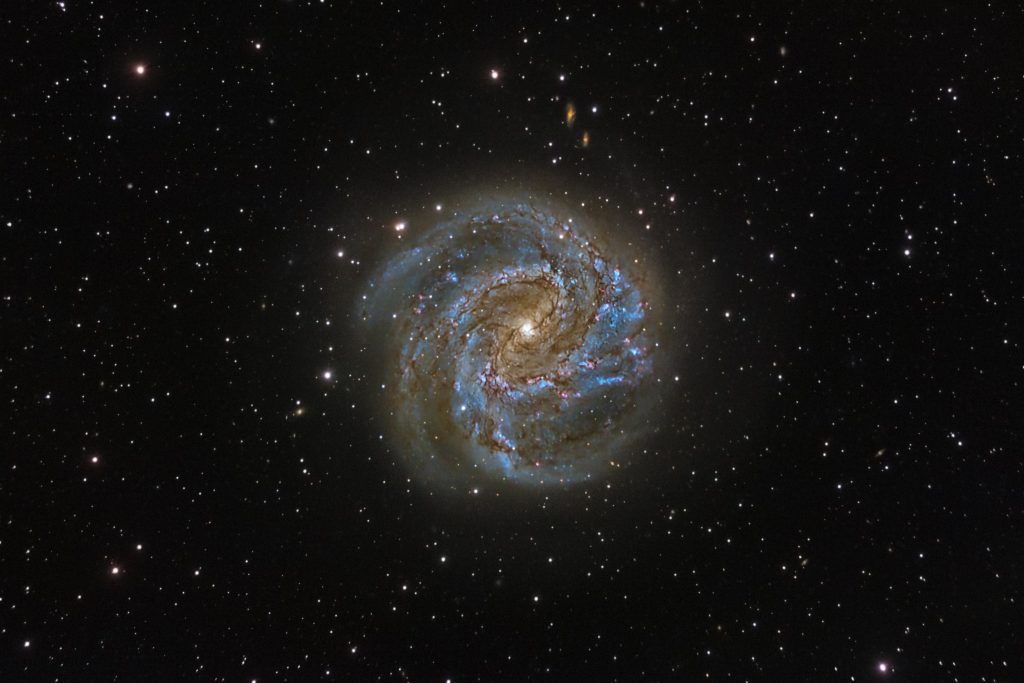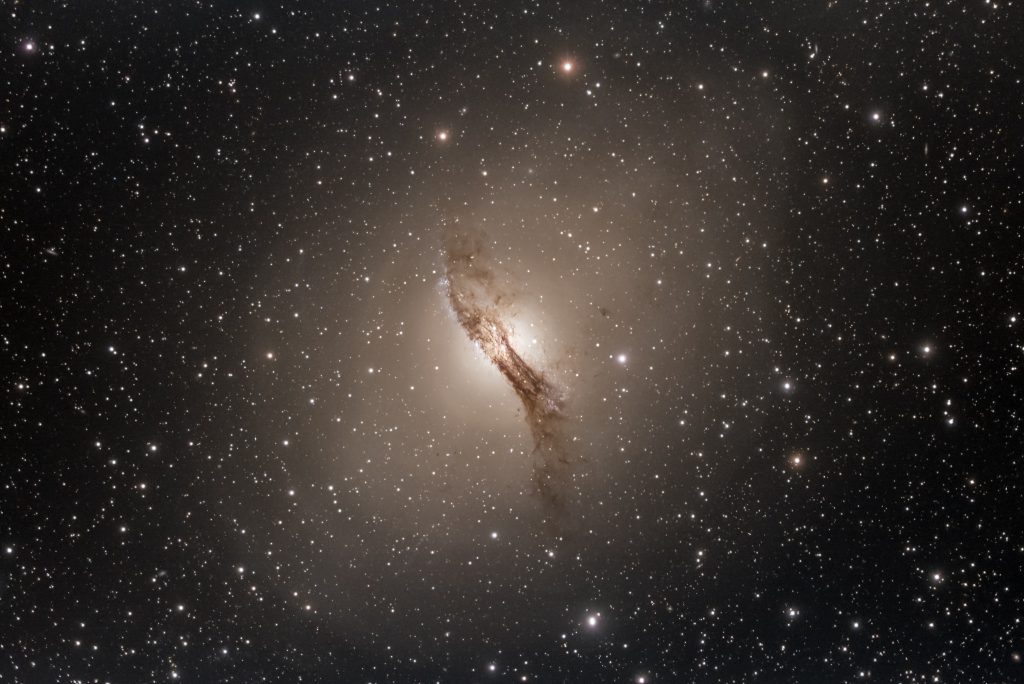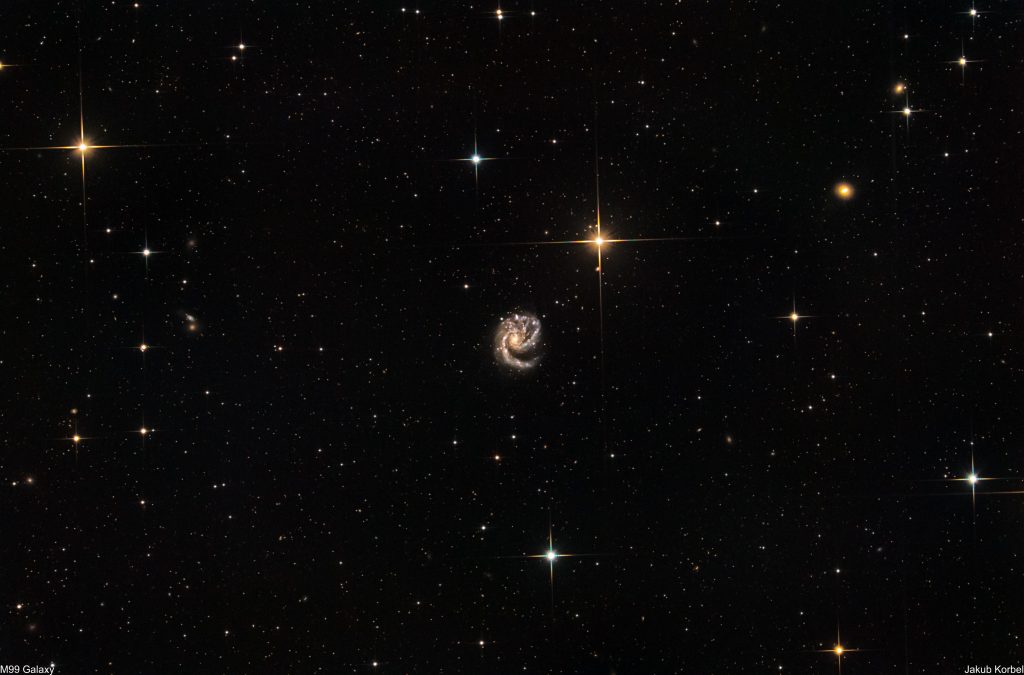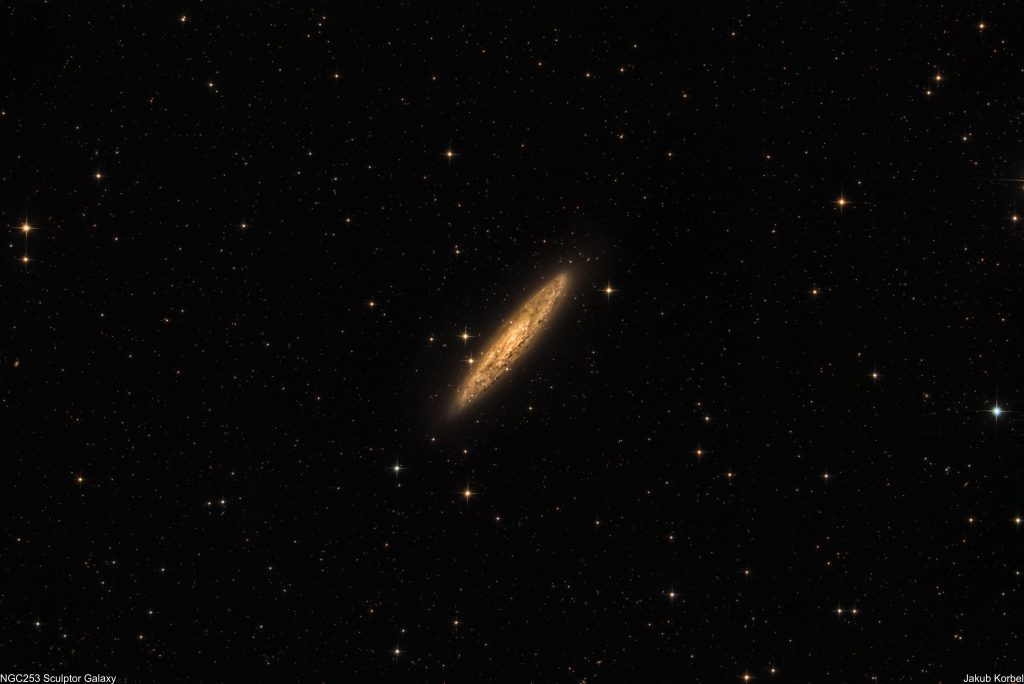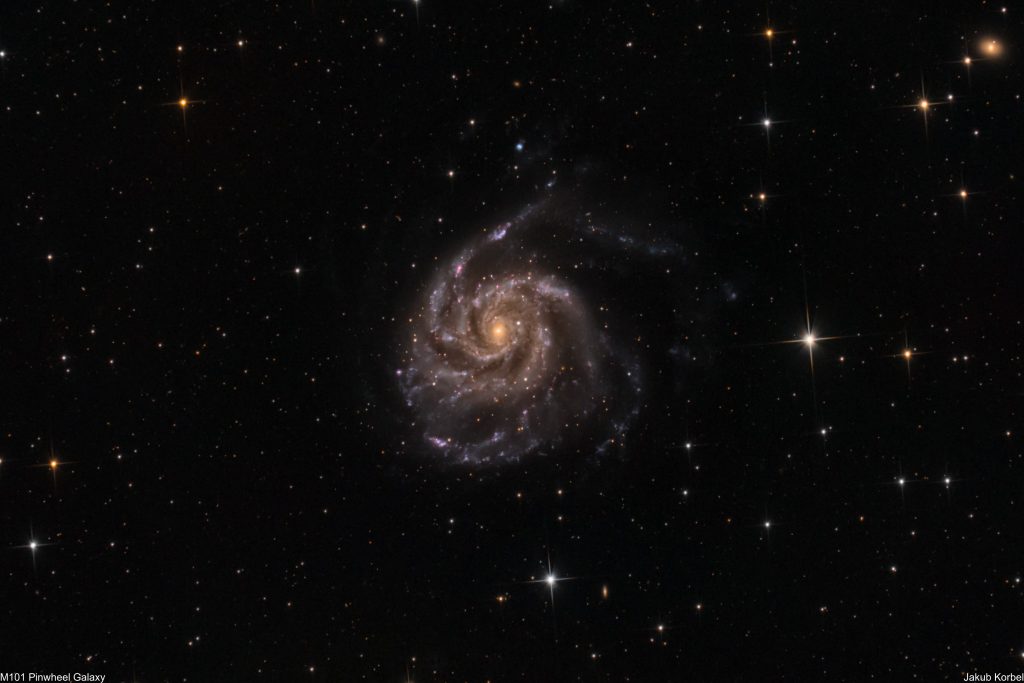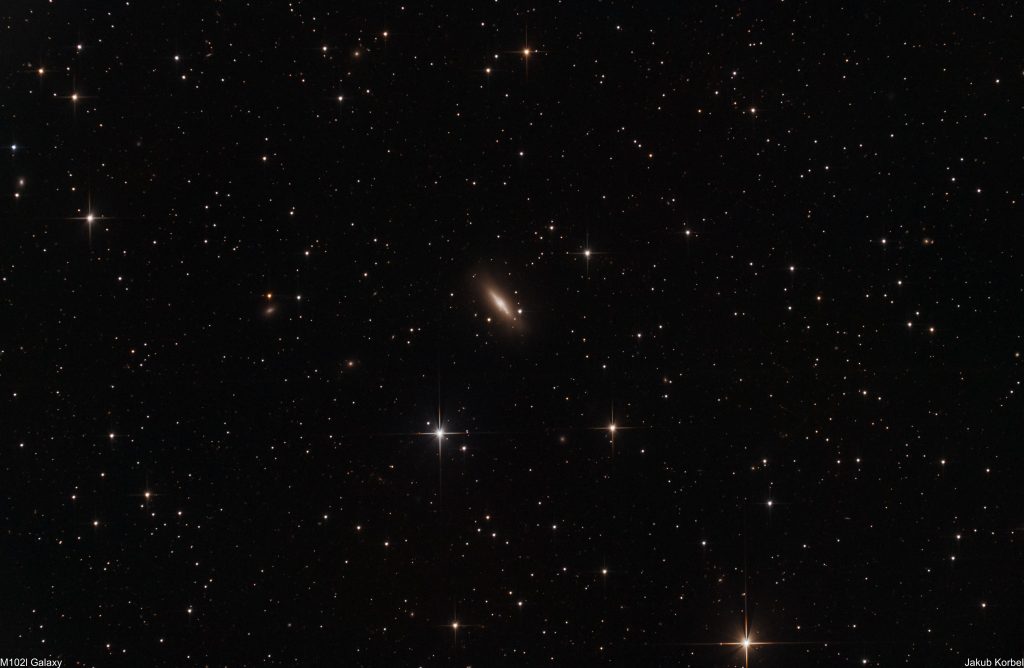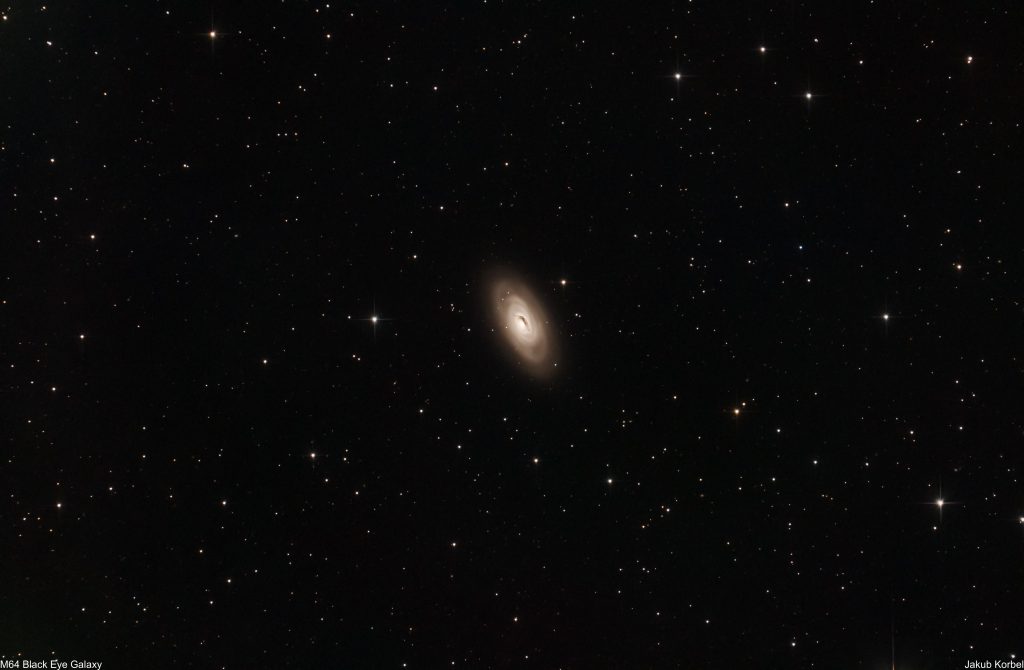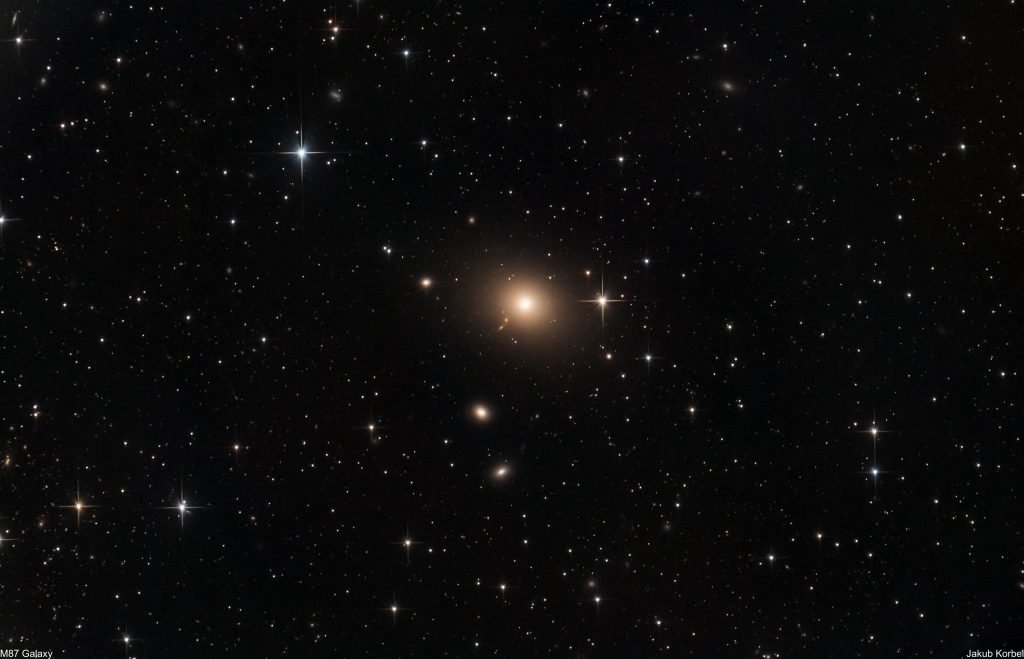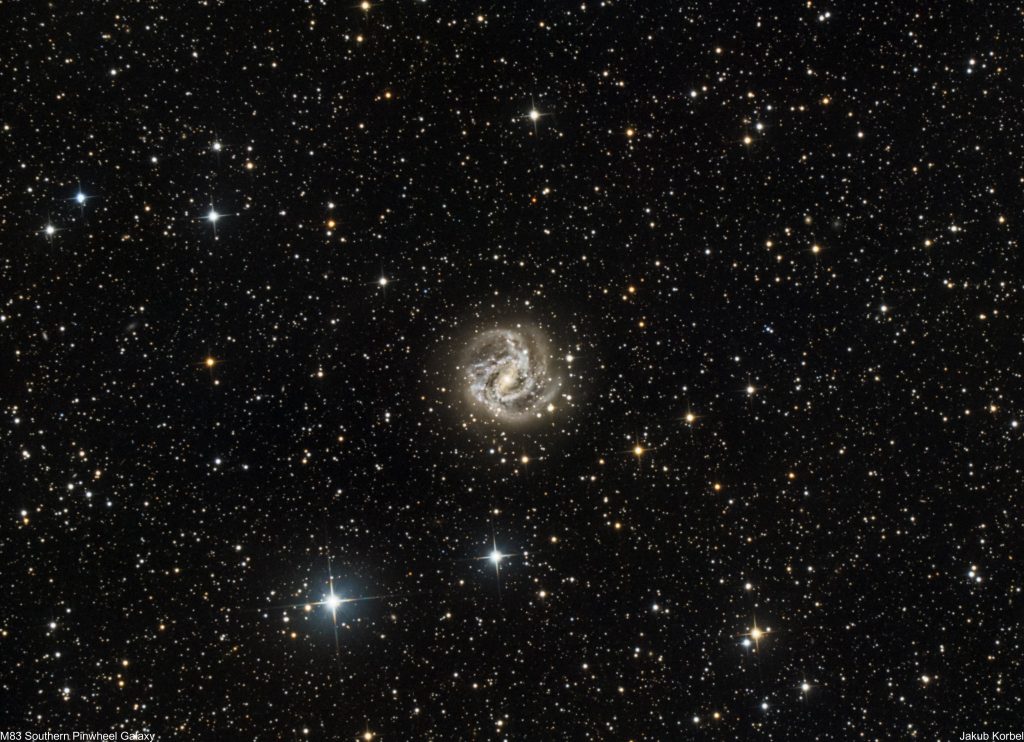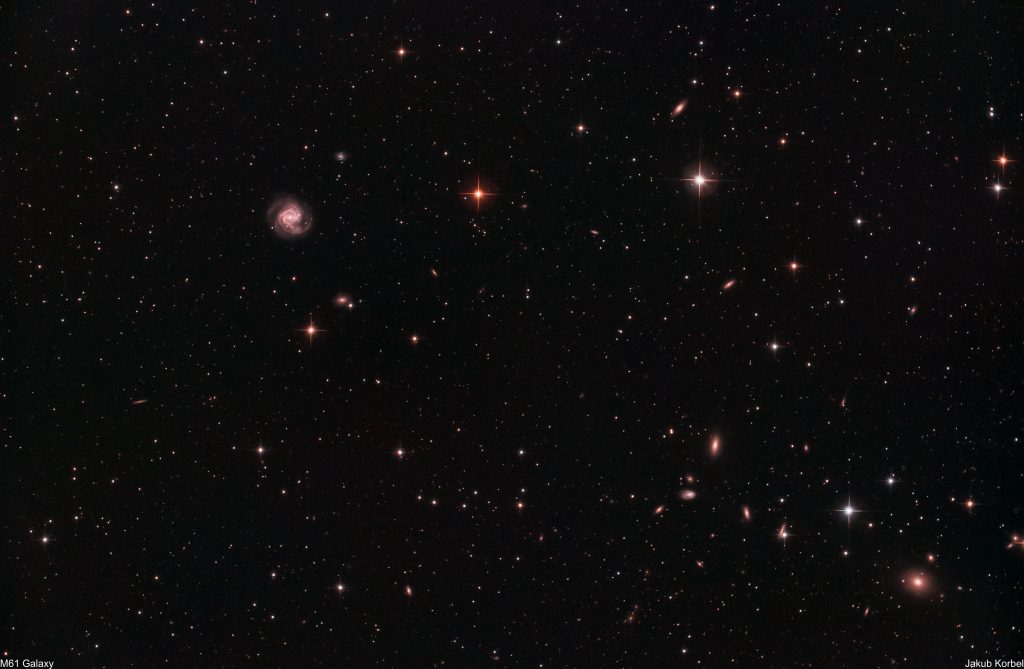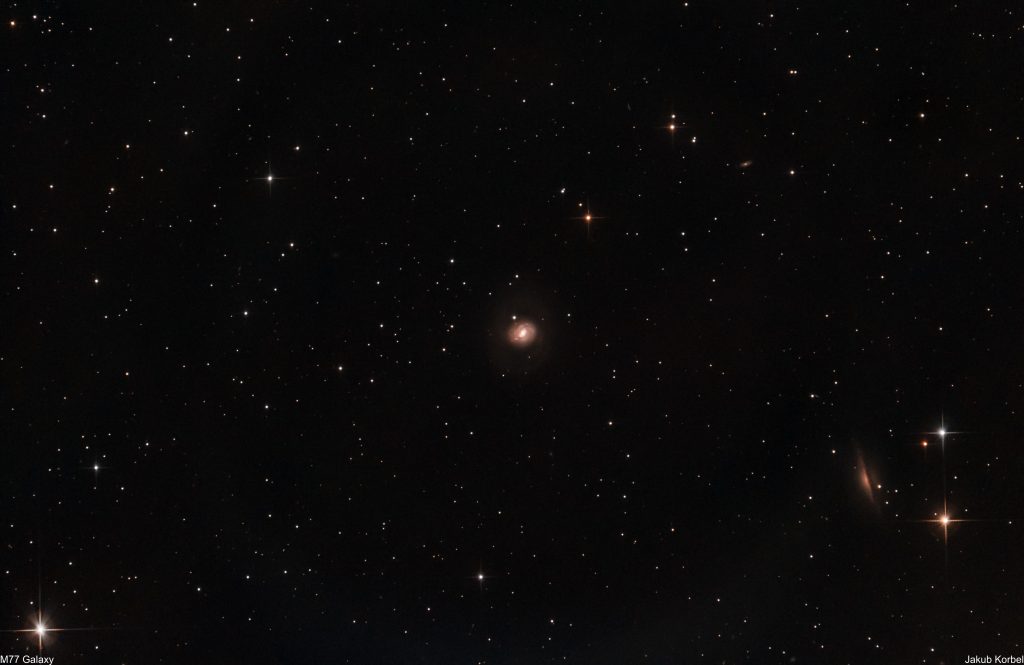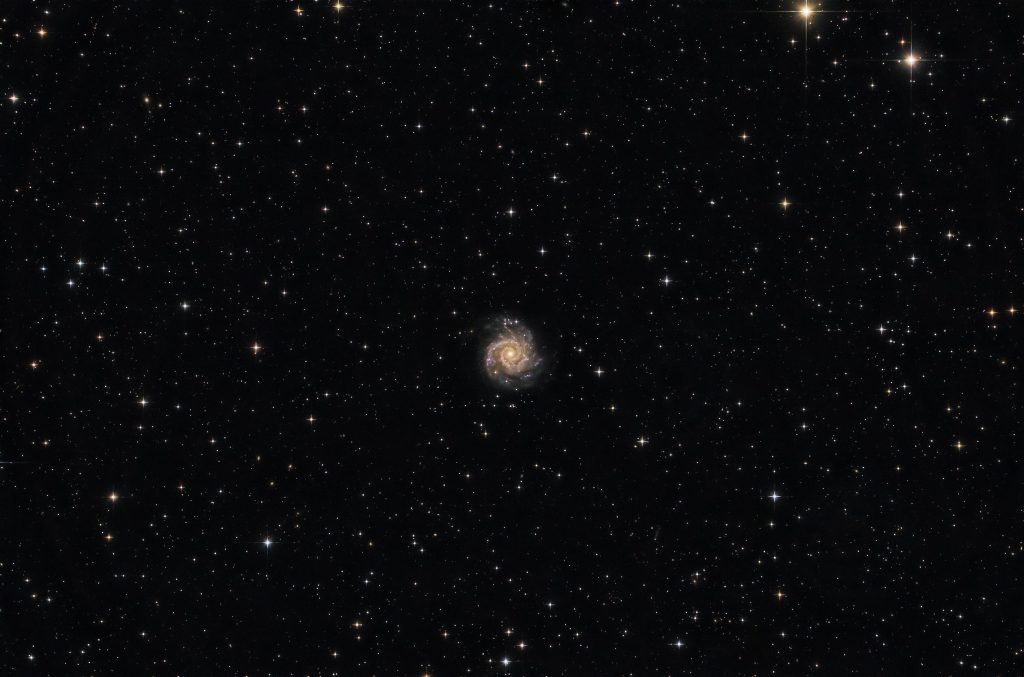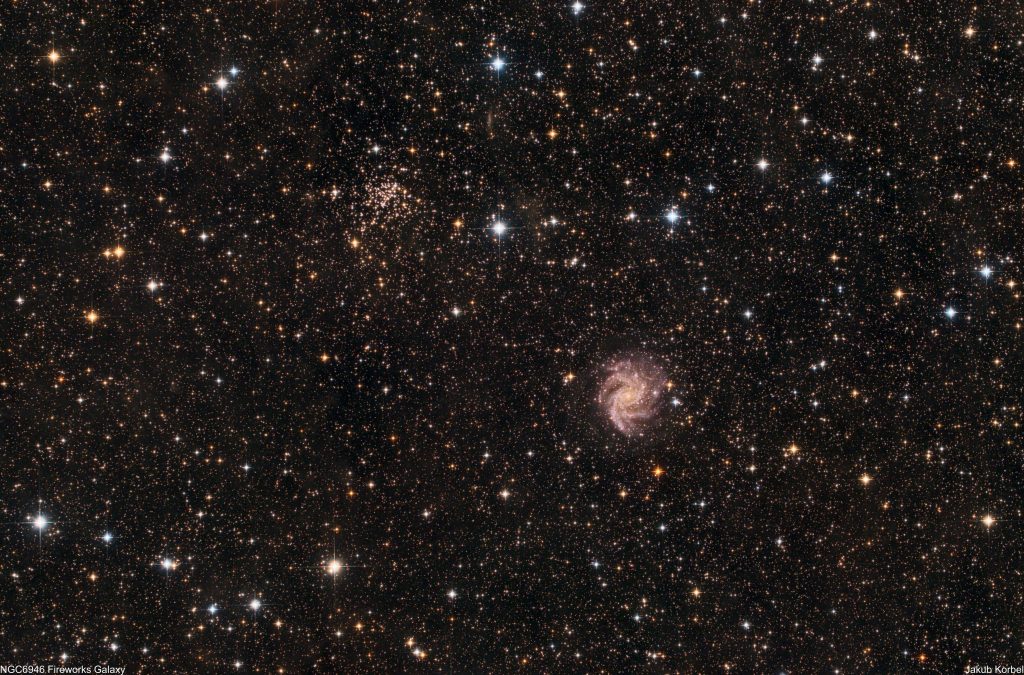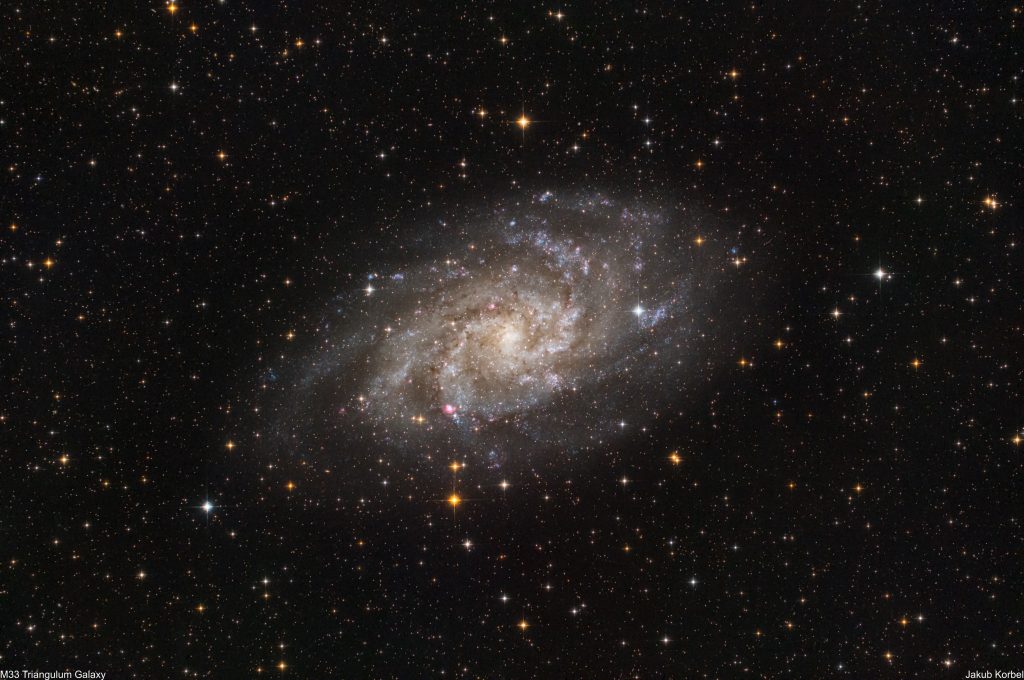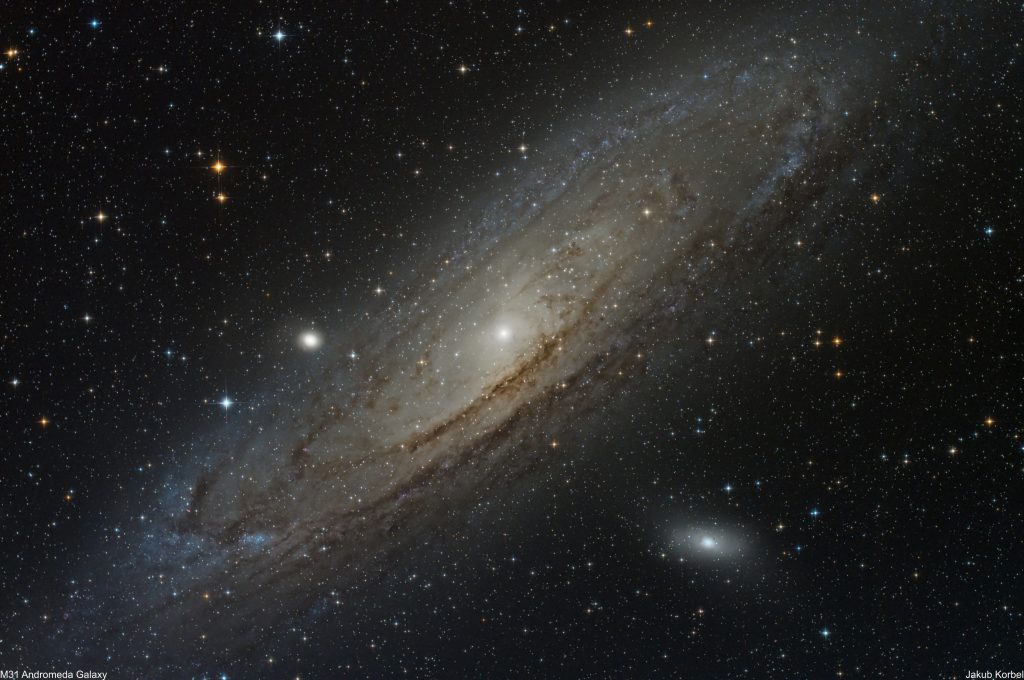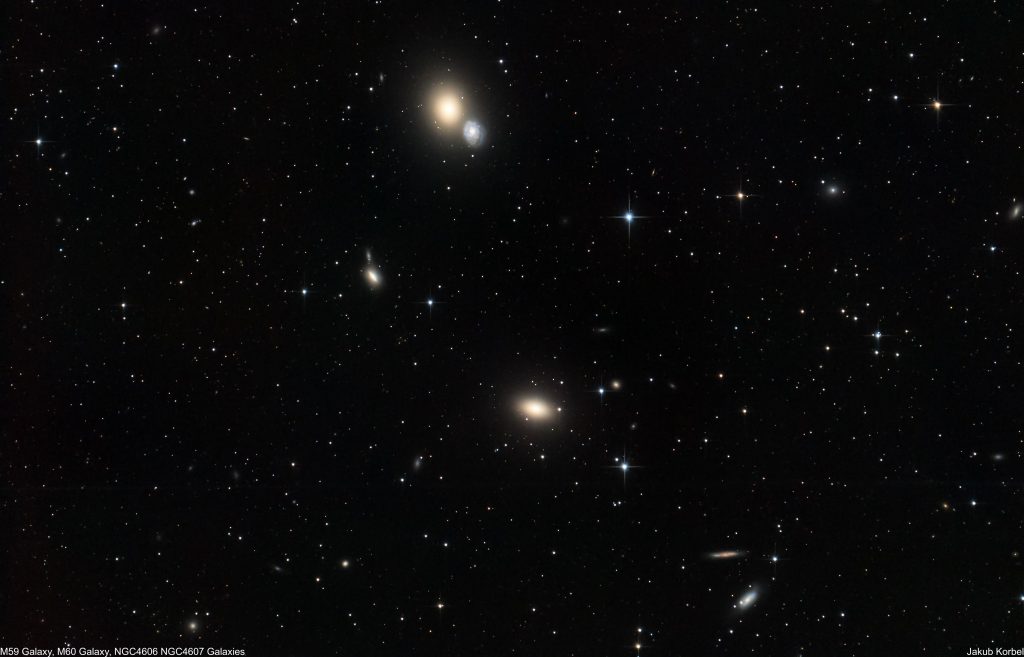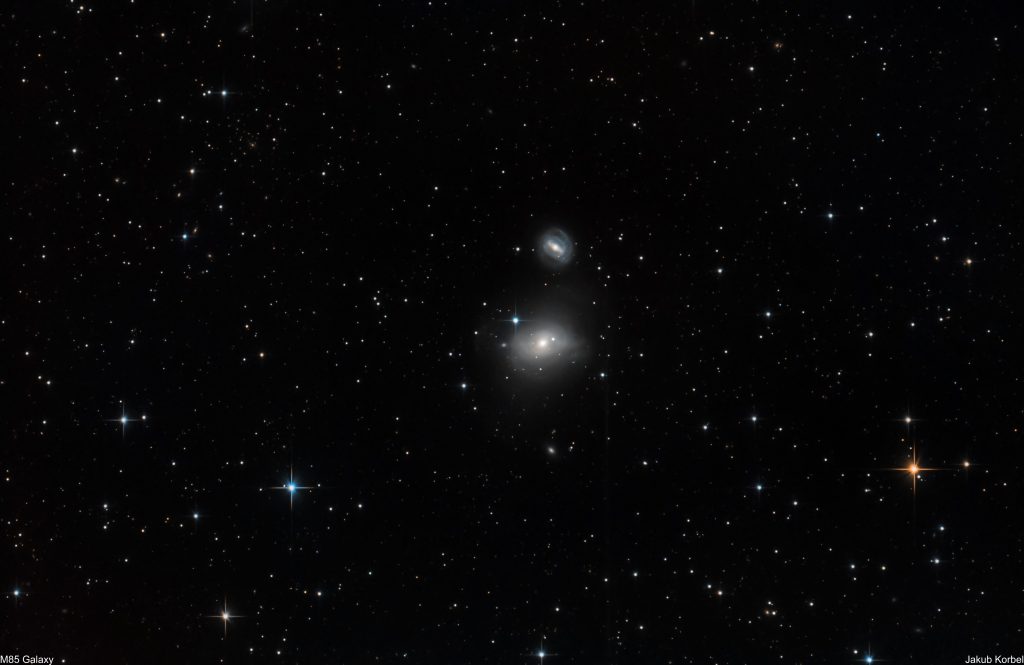Messier 63 is a stunning spiral galaxy located about 37 million light-years away from Earth in the constellation Canes Venatici. The galaxy gets its name from the striking pattern of dust and gas that resembles the petals of a sunflower surrounding its bright yellow core.
The Sunflower Galaxy was first discovered by the French astronomer Pierre Méchain in 1779 and later added to the Messier catalog by Charles Messier in 1781. With an apparent magnitude of 8.6, it is easily visible with a small telescope or binoculars.
Spring is a great time to observe galaxies like Messier 63 because, during this season, the Earth is oriented in such a way that we are looking out towards the outer regions of our Milky Way galaxy. This means that the sky is darker and clearer, providing ideal conditions for observing distant galaxies.
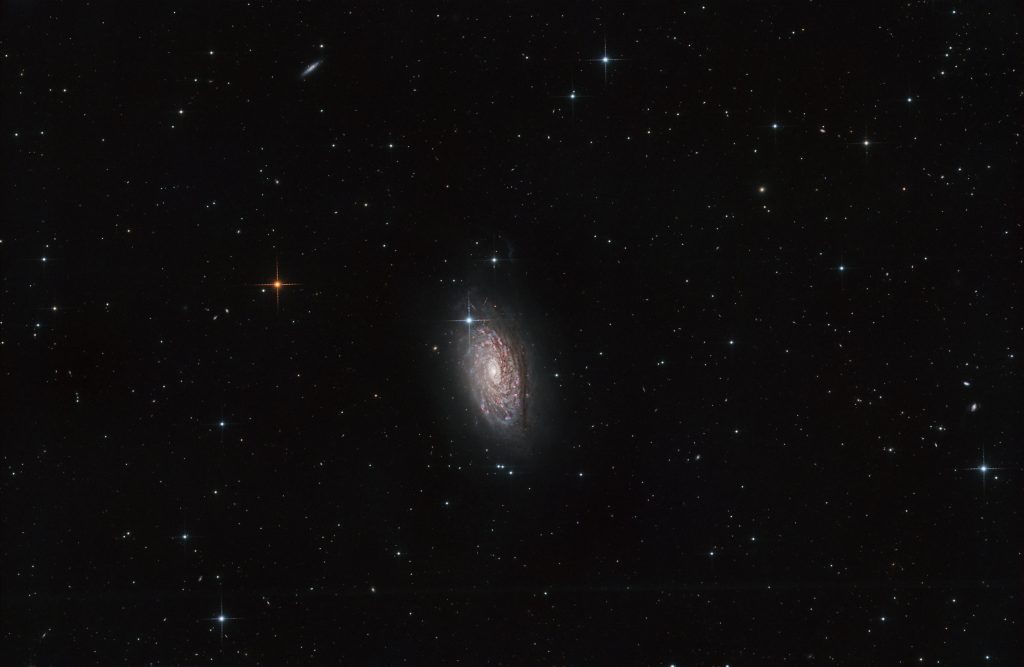
| Telescope | Newton 254/1000 mm |
| Aperture | 254 mm |
| Focal length | 1150 mm |
| Mount | Gemini G53f |
| Autoguiding | ZWO 174MM, TS 60/240 mm |
| Camera | ZWO 2600MM @-10°C |
| Corrector | Tele Vue Paracorr Type-2 |
| Filters | Antlia Ha, 3 nm, V-Pro RGB |
| Exposure | 4x24x180s, Gain 100, bin 1×1, |
| Date | 2023-03-21 |

